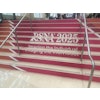Monday, December 2 | 11:10 a.m.-11:20 a.m. | SSC04-05 | Room S102CD
What's the best approach with chest radiography to detect air between the lungs and chest wall that could result in a collapsed lung? Researchers from Boston explored three options.Dr. Fatemeh Homayounieh, a postdoctoral research fellow at Massachusetts General Hospital, and colleagues evaluated unprocessed images, bone-subtracted images, and edge-enhanced frontal chest radiographs to determine how to diagnose patients with a pneumothorax.
The retrospective study included some 200 patients (mean age, 53 ± 24 years) who underwent frontal chest x-rays to assess the presence of a pneumothorax ranging in size from 3 mm to 5 mm. All unprocessed chest x-rays were later converted to bone-subtracted and edge-enhanced images.
Two thoracic radiologists separately evaluated the unprocessed, bone-subtracted, and edge-enhanced x-ray images and recorded the presence, location, and size of the pneumothorax, as well as their confidence in detection. Area under the curve (AUC) was calculated with receiver operating characteristic (ROC) analyses to determine the accuracy of pneumothorax detection.
They found 120 right, 95 left, and 13 bilateral pneumothoraces ranging in size from only traces of the condition to moderate, large, and life-threating status.
Bone-subtracted x-rays had the lowest accuracy for detection, compared with unprocessed and edge-enhanced images, and showed reduced sensitivity for right-side pneumothoraces for both readers. Edge-enhanced chest x-rays achieved the highest detection rates. In addition, there were no false-positive pneumothoraces for either the bone-subtracted or edge-enhanced images.
The findings led the researchers to conclude that edge-enhanced chest x-rays improve the detection of pneumothorax over unprocessed images, while bone-subtracted images "must be cautiously reviewed to avoid false negatives."


















